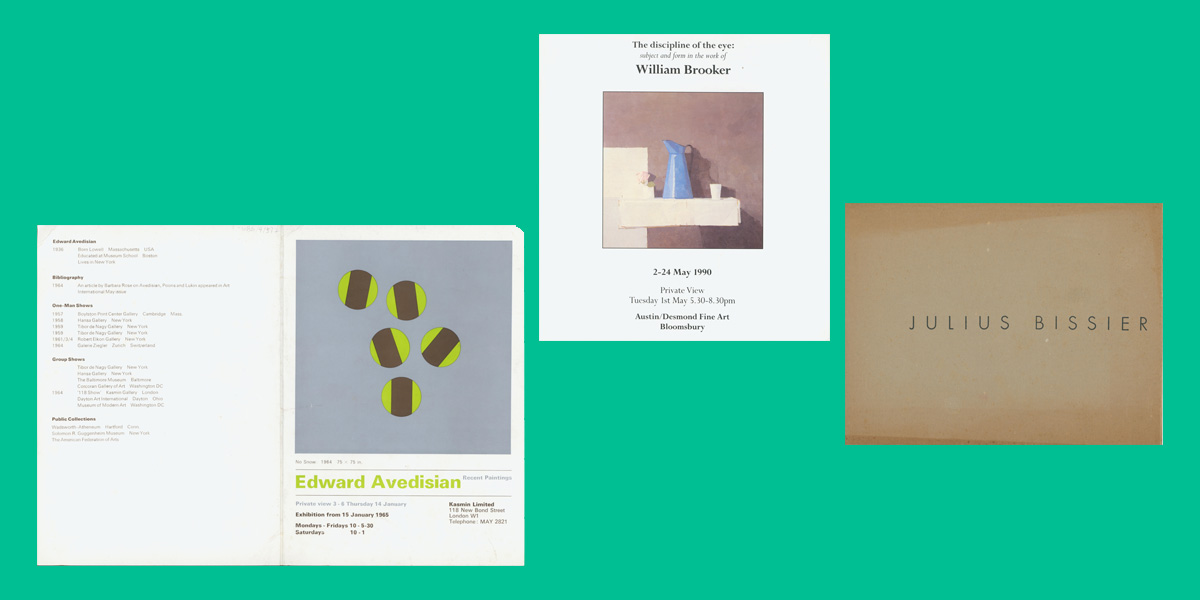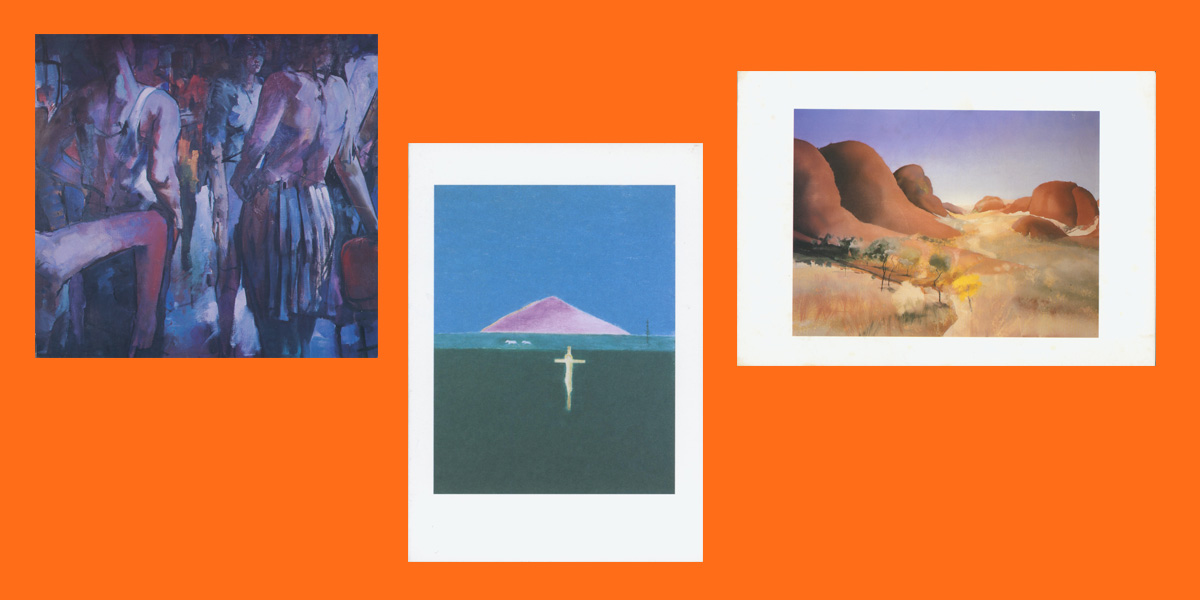Artistic Echoes: Tracing Wilhelmina Barns-Graham’s Inspirational Journey Through Her Exhibition Ephemera
Xiangyuan Meng, a student currently on the Master’s programme for History of Art at the University of Glasgow, has recently completed a 20-day archive placement recording exhibition ephemera collected by Barns-Graham from galleries in the UK and beyond.
Window into a Diverse World of Art
The collection offers a distinctive window into the diverse world of art that shaped Barns-Graham’s career and interest in various artists and art movements. So far, 150 items in this collection have been catalogued, spanning the years 1946 to 2004 and encompassing the work of roughly 117 artists. This extensive array reveals a preference for contemporary and abstract art styles, with most artists catalogued so far hailing from Scotland.

Photos of Barns-Graham at various private views in the 1990s; in the centre with Terry Frost
Her Personal Art Network
The thematic diversity of these exhibitions is significant; covering still life, landscape, recent paintings, and colourful abstracts. The collection’s broad scope indicates Barns-Graham’s wide-ranging artistic interests and her openness to various artistic expressions. Her inclination towards contemporary and abstract art aligns with the evolution of her own style, which (broadly speaking) saw a transition from more figurative work to abstraction. This is particularly evident in her later geometric abstract works from the Things of a Kind in Order and Disorder series of the 1960s and 1970s.
Barns-Graham’s collection of exhibition ephemera is mainly composed of private view invitations. They emphasise the personalised nature of her art network and her close relationship with the art community – especially in Scotland in these instances. Therefore, this collection not only shows the changing trajectory of her artistic taste, but also depicts the broader art exhibition landscape over the time period.

L to R: Private view invitations for Edward Avedisian and William Brooker exhibitions and an exhibition catalogue for Julius Bissier
A Few Selected Examples
Private View invitation to The discipline of the eye: subject and form in the work of William Brooker (1990)
Brooker’s work, noted for its Morandi-like qualities, might have demonstrated to Barns-Graham how subtle colour variations and compositions could evoke depth and emotion, similar to how Morandi’s still lifes convey serenity and contemplation. [WBG/9/639]
Exhibition Catalogue for Julius Bissier Paintings (c.1960)
Bissier’s abstract oil paintings from 1960 represent a post-war exploration of abstract colours and forms. [WBG/9/639]
Private View invitation to Edward Avedisian Recent Paintings (1965)
Edward Avedisian’s exhibition, showcased a series of recent paintings that might have combined vibrant colour schemes with abstract forms. Avedisian, known for his bold use of colour and abstract compositions, could have inspired Barns-Graham with his approach to abstraction, potentially influencing her exploration of colour and form in her own abstract works. [WBG/9/572]
Private View invitation to Michael Andrews: Ayers Rock and Other Landscapes (1991)
This exhibition featured Andrews’ nuanced and atmospheric landscapes, which blend elements of realism and abstraction. Andrews’ ability to capture the essence and mood of a landscape through abstract elements could have resonated with Barns-Graham, reflecting her interest in abstracting natural forms and landscapes in her own work. [WBG/9/587]
Private View invitation to Undercurrents; Recent Paintings by Crawfurd Adamson (1988)
Adamson’s work, combining elements of portraiture and landscape, provides a Scottish perspective that could have appealed to Barns-Graham. The blending of genres in Adamson’s work, alongside the impressions of landscapes and figures, may have offered Barns-Graham insights into integrating narrative and emotion into abstract compositions. [WBG/9/574]
Private View invitation to Craigie Aitchison (2003)
Born in Edinburgh, Aitchison’s work, spans landscapes, people, and abstract themes. His unique approach to colour and form, often incorporating religious and landscape motifs in a simplified, abstract manner. [WBG/9/584]

L to R: private view invitations for Crawfurd Adamson, Craigie Aitchison and Michael Andrews
Drawn to a Range of Artistic Expression
Analyzing the themes and styles present in these brochures, it is evident that Barns-Graham was drawn to a range of artistic expressions. The presence of themes like landscape and abstract colours in the collection correlates with her own artistic journey. It is notable, too, that she maintained an interest in the shifting art scene (both in Scotland and the rest of the UK) well into her later life.
In conclusion, Wilhelmina Barns-Graham’s collection of exhibition ephemera is more than a mere compilation of brochures; it is a curated record of her artistic journey and preferences. This collection, reflecting her engagements and interests within the art world, offers a unique perspective to understand her evolution as an artist. Through these pamphlets, one can trace the themes and styles that resonated with Barns-Graham, providing a deeper understanding of her artistic tastes and the influences that shaped her remarkable career.
